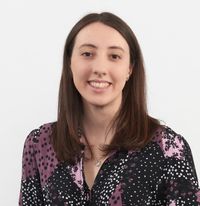Should you invest in the US stock market – and will Big Tech crash?
The US stock market has offered remarkable growth opportunities in recent years, with Big Tech leading the charge. Can the bull market continue?


The US stock market soared to a record high earlier this year, propelled forward by strong performance from tech stocks like Nvidia, Microsoft, Meta, Alphabet and Amazon. These companies are five of the so-called ‘Magnificent Seven’ tech stocks.
We have seen huge strides forward in the realm of artificial intelligence in recent years – and Big Tech stocks have boomed as a result. Today, the Magnificent Seven make up almost a third of the S&P 500’s value.
Combined with other factors, this has resulted in US equities dwarfing other regions in recent years. For example, UK equity valuations have lagged behind their US peers, despite the FTSE 100 also soaring to a record high this year.
MoneyWeek
Subscribe to MoneyWeek today and get your first six magazine issues absolutely FREE

Sign up to Money Morning
Don't miss the latest investment and personal finances news, market analysis, plus money-saving tips with our free twice-daily newsletter
Don't miss the latest investment and personal finances news, market analysis, plus money-saving tips with our free twice-daily newsletter
But for how long can this US bull run continue?
Stock market highs aren’t always the best time to enter the market – and there are a lot of complex macro factors at play this year too. These include sticky inflation, mixed growth signals, and a presidential election.
We take a look at the big questions that investors are asking. What’s next for US equities? Are US stocks overvalued? And will tech stocks come crashing down?
How have US stocks performed in recent years?
US equities have delivered strong growth to investors in recent years. The S&P 500 has grown by around 27% over the past year, 88% over the past five years, and 183% over the past 10 years.
Meanwhile, if you had invested in the index 20 years ago, your investment would have grown by 385% – and that figure doesn’t even include the effect of any dividends. It doesn’t include inflation either but, even so, it’s certainly not to be sniffed at.
Some individual stocks have delivered better returns still. We looked at the best-performing stocks in the S&P 500 in a recent article, and companies like Apple have delivered a whopping 53,690% return over the past 20 years.
Data from Morningstar Direct reveals that, if you had invested $1,000 in the iPhone giant 20 years ago, it would be worth more than $450,000 today.
When you look at these numbers, particularly on a cumulative basis, they tell a compelling story. But will US stocks continue to grow at the same rate going forward?
What’s going on with the US economy?
The US economy has painted a mixed picture in recent months. Inflation has proved stickier than expected, delaying hopes for interest rate cuts. What’s more, first-quarter GDP figures came in significantly below forecasts.
Firstly, let’s take a look at inflation. The US Consumer Price Index (CPI) has bounced around so far in 2024. It came in at 3.1% in January, 3.2% in February, 3.5% in March, and 3.4% in April.
The slight downward move this month will “offer reassurance to markets” after the uptick last month, says Richard Flynn, managing director at Charles Schwab UK. However, it is “unlikely to prompt an imminent change in interest rates”.
He adds: “Patience has been the Fed’s core message lately. Officials have been fairly consistent in stating that current interest rates are sufficiently restrictive to bring inflation under control and that the next move will be a cut. However, it is also clear that they are in no rush to make that move.”
As a result, some experts (including those at ING Economics) have said the Bank of England could start cutting rates before the Federal Reserve. Interest rate cuts are usually good news for equity markets, as they tend to boost the economy and earnings, resulting in stronger company performance.
On top of this, first-quarter US economic growth disappointed to the downside when the figures were released in April. The economy grew at an annualised rate of 1.6%, coming in well below expectations. Economists polled by Reuters were expecting it to grow by 2.4%.
Coupled with inflation, the disappointing growth figures caused some experts to raise fears about the onset of stagflation – never good news for an economy.
Despite this, the US stock market has proved fairly resilient. “Corporate profitability has been helping to push US equities higher, even as economic indicators paint a mixed picture of the US economy,” explains Lindsay James, investment strategist at Quilter Investors.
Current US stock market risks
Beyond the economic outlook, concentration risk is an important factor to bear in mind when investing in US equities. The key players have grown very big in recent years.
“The Magnificent Seven are valued at an eye-watering total of around $14 trillion and make up, between them, nearly a third of the S&P 500’s total value,” says Susannah Streeter, head of money and markets at Hargreaves Lansdown.
Those who access US equity markets through an index tracker should be particularly careful. If you don’t want to be overly exposed to one sector, it could be time to dump your tracker in favour of an actively-managed fund. But bear in mind these come with higher management fees.
You should also remember that it is a bit of a catch-22. If tech stocks continue to soar, diversifying away from the sector will limit the size of your returns. However, if they crash and you haven’t diversified your holdings, you could be in for a rough ride too.
We are now at a point where a single company can dictate the fortunes of the broader index – which feels like a dangerous place to be. For example, Nvidia currently accounts for one quarter of the S&P 500’s year-to-date performance, according to Quilter Investors.
James explains: “Demand growth for Nvidia’s H100 chips, priced at around $25,000 dollars apiece, has in recent quarters surpassed expectations as the development of large language models to fuel AI tools has continued apace.”
“However, with investor expectations becoming ever more optimistic, any signs of cracks appearing in the demand profile could serve to cause an outsized upset in market performance whilst a continued bullish message could see US markets attain new highs,” she adds.
Are US tech stocks overvalued?
When it comes to Big Tech, there is much debate around whether these companies can continue to race ahead. Their valuations have soared to incredibly high levels – and some investors aren’t convinced their current prices are sustainable.
We have already seen a divergence in the performance of the Magnificent Seven tech stocks in recent months. Apple’s performance has been mixed so far this year, and Tesla has had a pretty disastrous start to 2024. Both have been struggling with reduced demand in the key market of China.
“All [Big Tech companies] claim to have their eye on the current prize of being a big player in artificial intelligence, and it’s the possibilities that AI will present in the future for these companies that are big drivers in their valuations,” says Streeter.
If these future possibilities aren’t realised, it will create problems – and recent comments coming out of the sector are causing concern. As Streeter points out, one key issue relates to data storage and electricity bottlenecks.
“Demand for generative AI solutions harnessing the power of large language models requires a huge well of data and that’s got to be stored somewhere,” she says. This is something that tech firms and cloud solutions companies are “racing to provide” – but this challenge comes with risks as well as opportunities.
“There are warnings that these power-hungry data centres – essentially warehouses full of computer systems – could put a big strain on electricity grids globally and that they may struggle to cope with demand,” Streeter says.
The International Energy Agency (IEA) reports that electricity consumption from data centres, AI and the cryptocurrency sector could double by 2026. This demand would be “roughly equivalent to the electricity consumption of Japan”.
If Big Tech companies manage to circumnavigate or resolve these challenges, then their valuations could continue to grow. However, if they hit a roadblock, then it is possible they will come crashing down.
The IEA says that “efficiency improvements and regulations will be crucial in restraining data centre energy consumption”.
It adds that new fields of research will also be key, pointing out a recent innovation from Google. The tech giant reported using its DeepMind AI to reduce the electricity demand of its data centre cooling systems by 40%.
Get the latest financial news, insights and expert analysis from our award-winning MoneyWeek team, to help you understand what really matters when it comes to your finances.
Katie has a background in investment writing and is interested in everything to do with personal finance, politics, and investing. She previously worked at MoneyWeek and Invesco.
-
 Pundits had a bad 2025 – here's what it means for investors
Pundits had a bad 2025 – here's what it means for investorsThe pundits came in for many shocks in 2025, says Max King. Here is what they should learn from them
-
 The MoneyWeek ETF portfolio – early 2026 update
The MoneyWeek ETF portfolio – early 2026 updateThe MoneyWeek ETF portfolio had a solid year in 2025 and looks well placed for what the next 12 months may bring
-
 New year, same market forecasts
New year, same market forecastsForecasts from banks and brokers are as bullish as ever this year, but there is less conviction about the US, says Cris Sholto Heaton
-
 How to profit from the UK leisure sector in 2026
How to profit from the UK leisure sector in 2026The UK leisure sector had a straitened few years but now have cash in the bank and are ready to splurge. The sector is best placed to profit
-
 Metals and AI power emerging markets
Metals and AI power emerging marketsThis year’s big emerging market winners have tended to offer exposure to one of 2025’s two winning trends – AI-focused tech and the global metals rally
-
 Quality emerging market companies with consistent returns
Quality emerging market companies with consistent returnsOpinion Mark Hammonds, portfolio manager at Guinness Global Investors, selects three emerging market stocks where he'd put his money
-
 Coreweave is on borrowed time
Coreweave is on borrowed timeAI infrastructure firm Coreweave is heading for trouble and is absurdly pricey, says Matthew Partridge
-
 An AI bust could hit private credit – could it cause a financial crisis?
An AI bust could hit private credit – could it cause a financial crisis?Opinion Private credit is playing a key role in funding data centres. It may be the first to take the hit if the AI boom ends, says Cris Sholto Heaton
-
 The top stocks of 2025 - did you pick a winner?
The top stocks of 2025 - did you pick a winner?As a chaotic year in the stock market draws to a close, we review which stocks were investors’ top picks for 2025
-
 Why Trustpilot is a stock to watch for exposure to the e-commerce market
Why Trustpilot is a stock to watch for exposure to the e-commerce marketTrustpilot has built a defensible position in one of the most critical areas of the internet: the infrastructure of trust, says Jamie Ward
